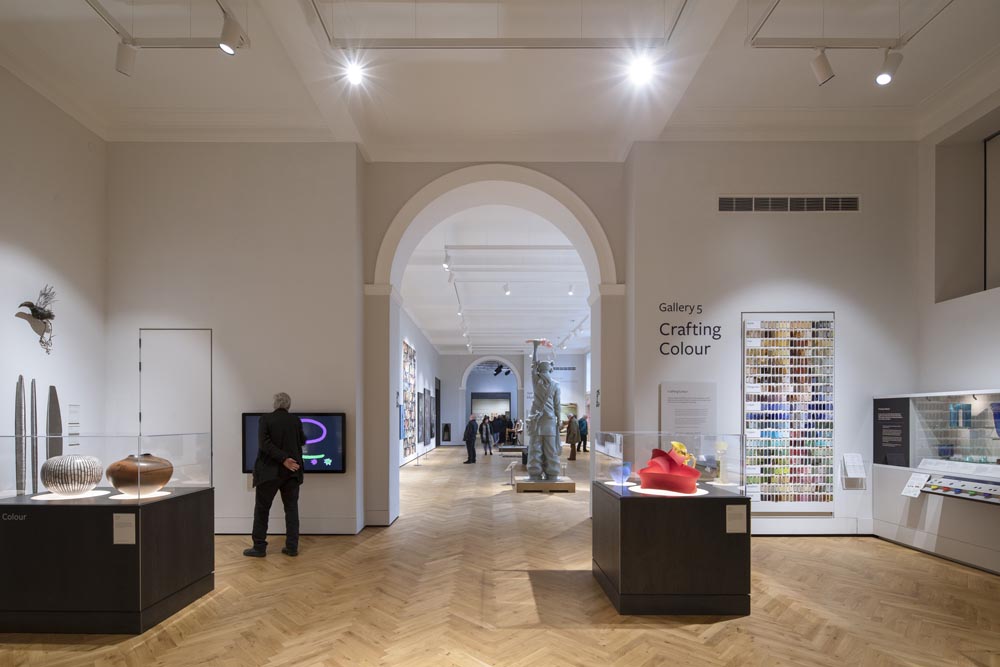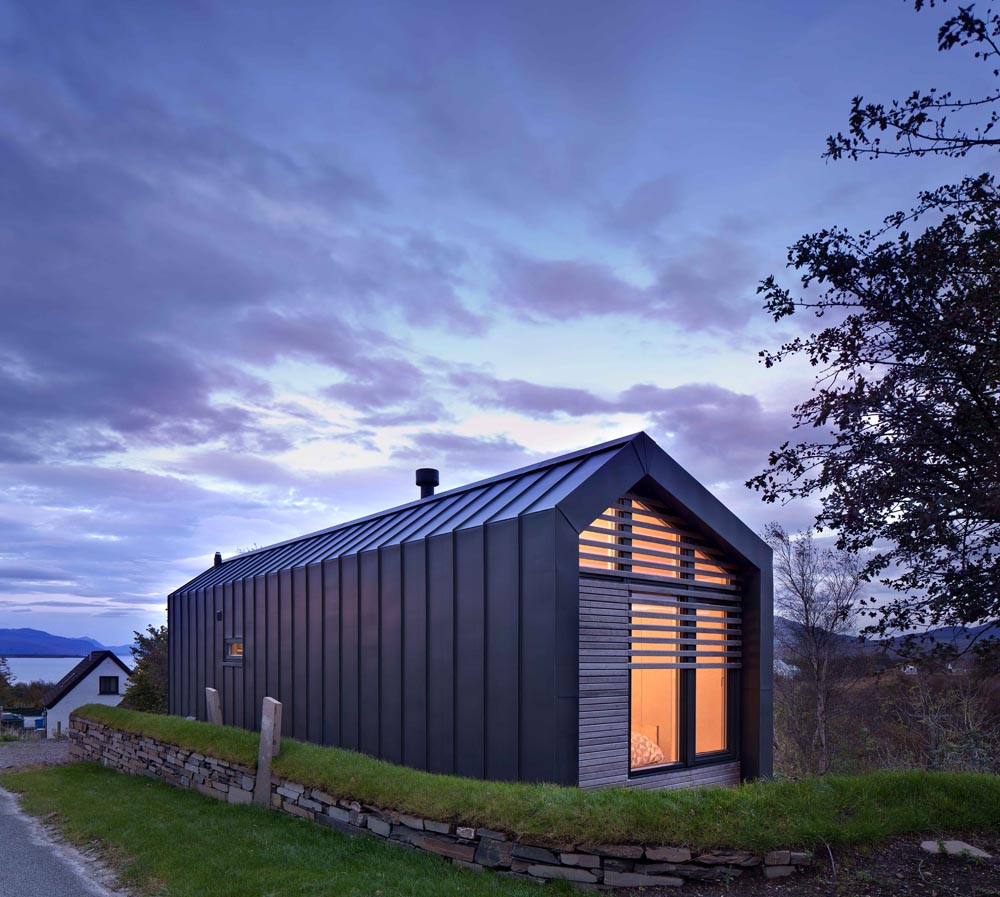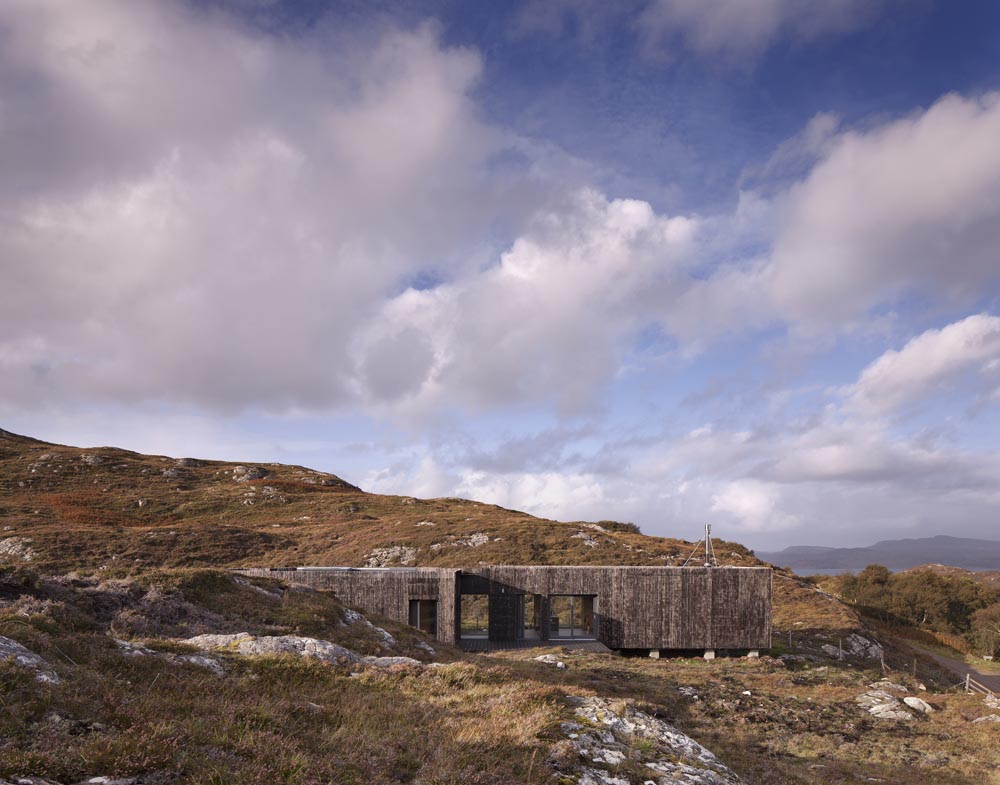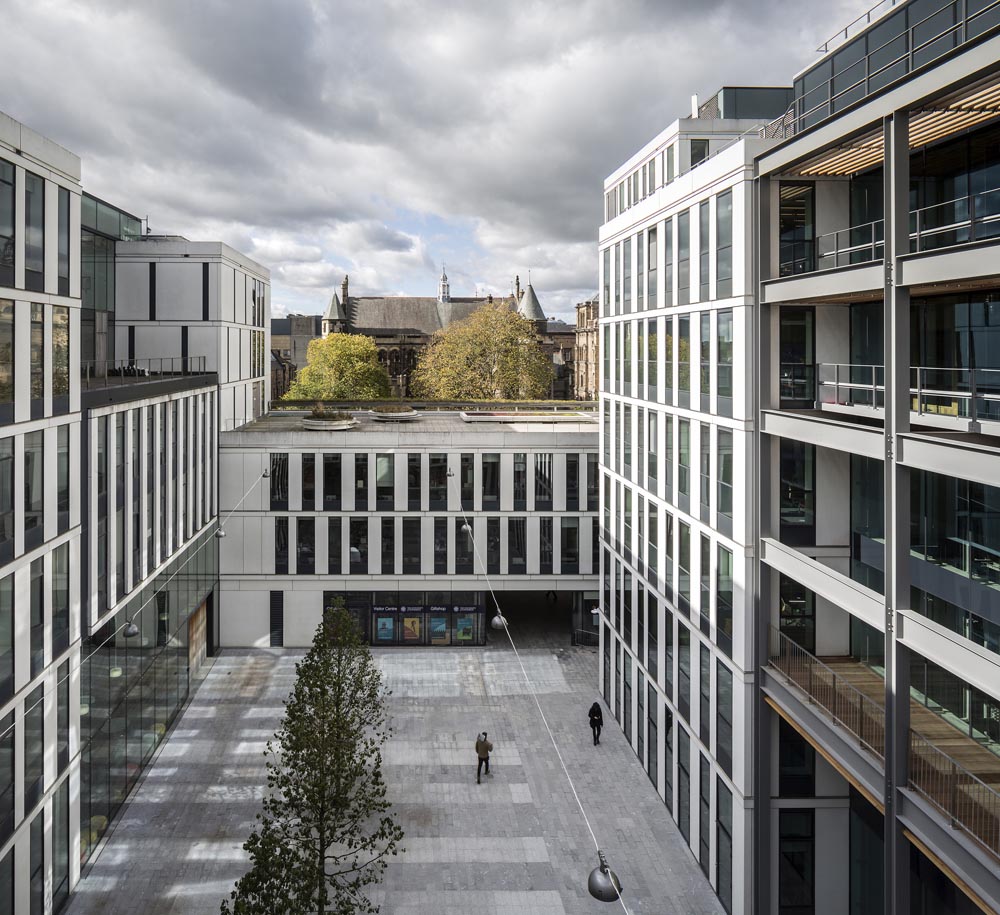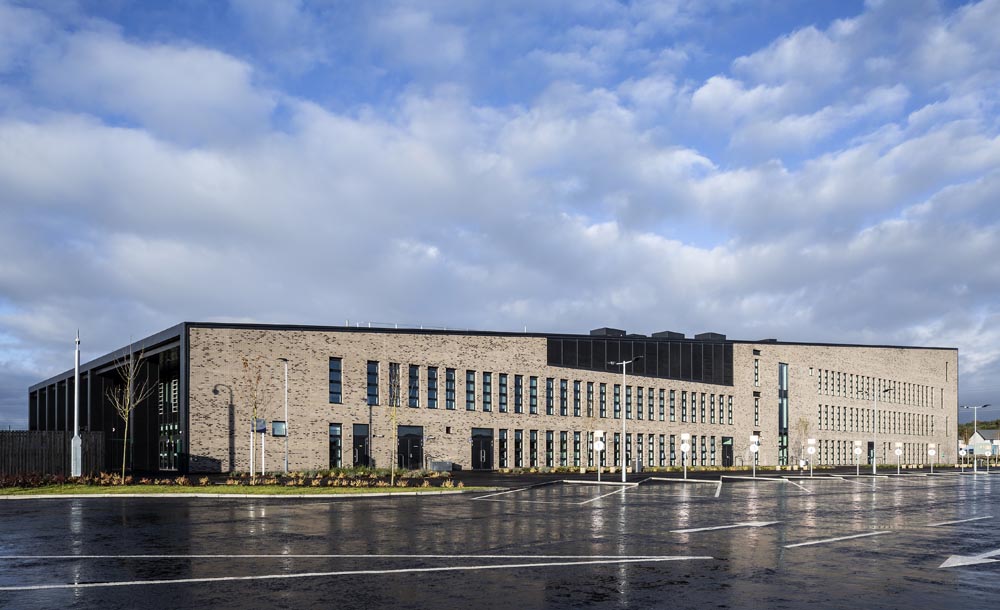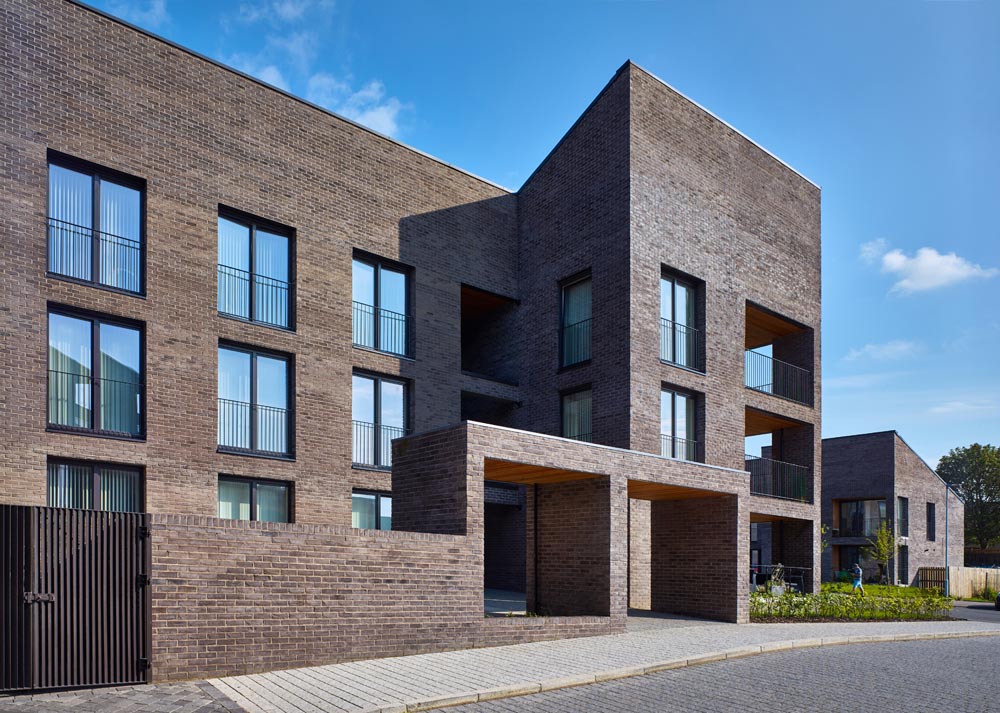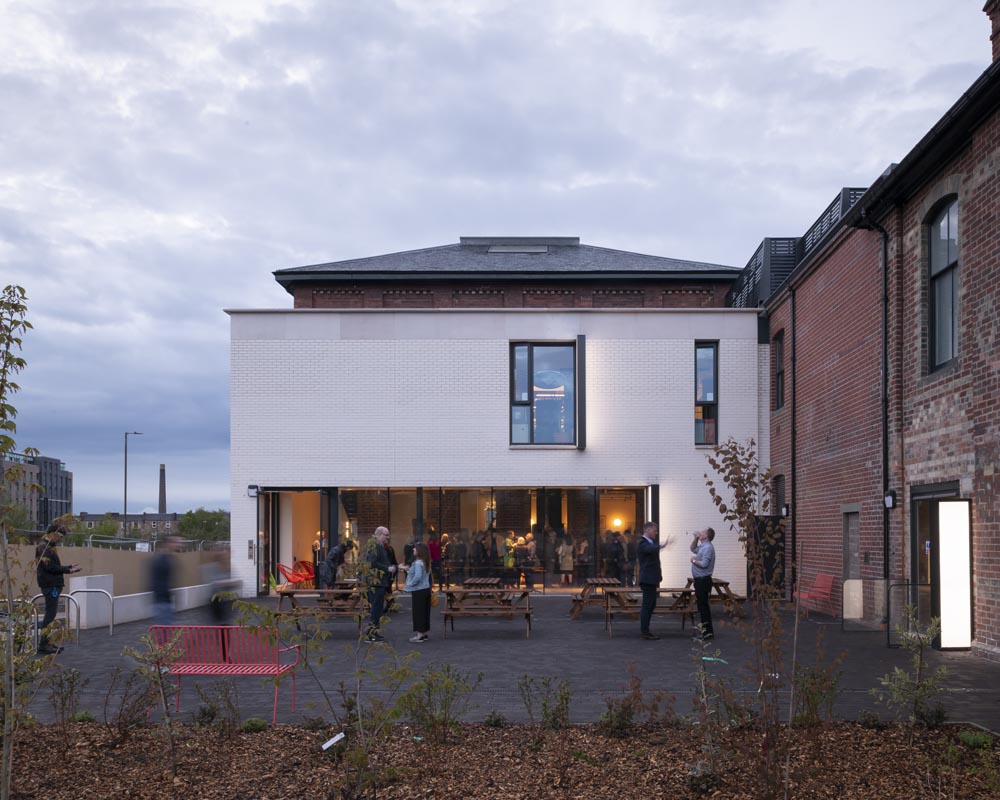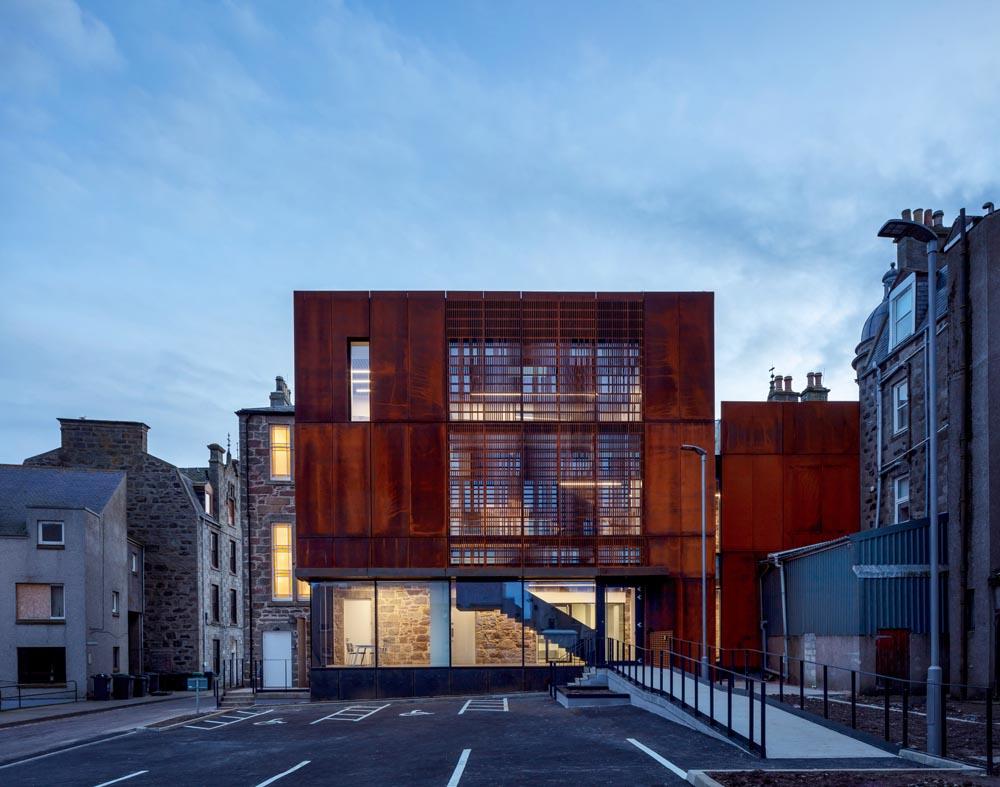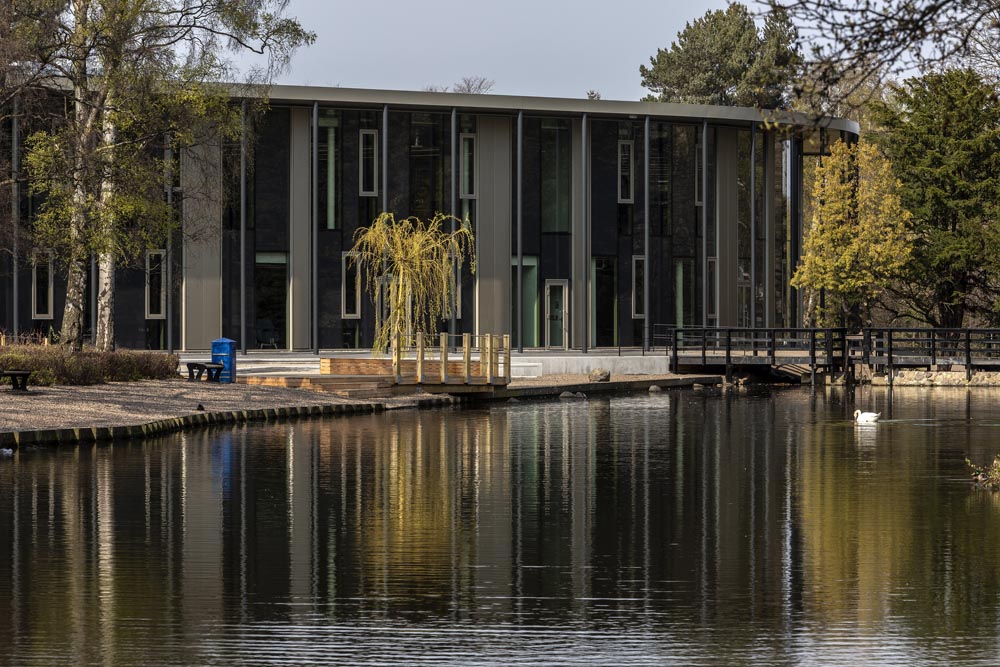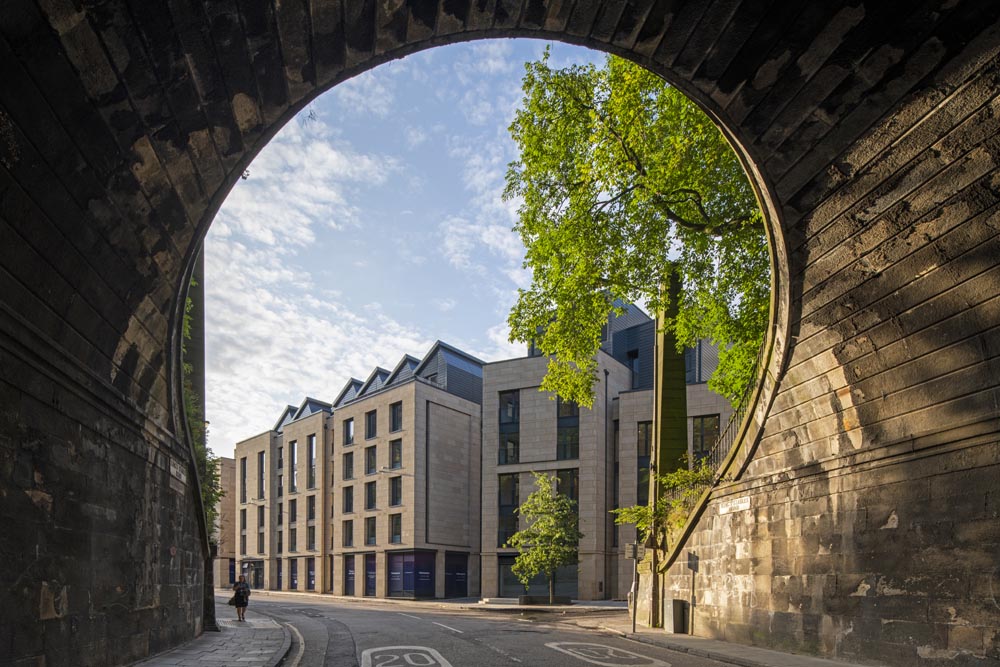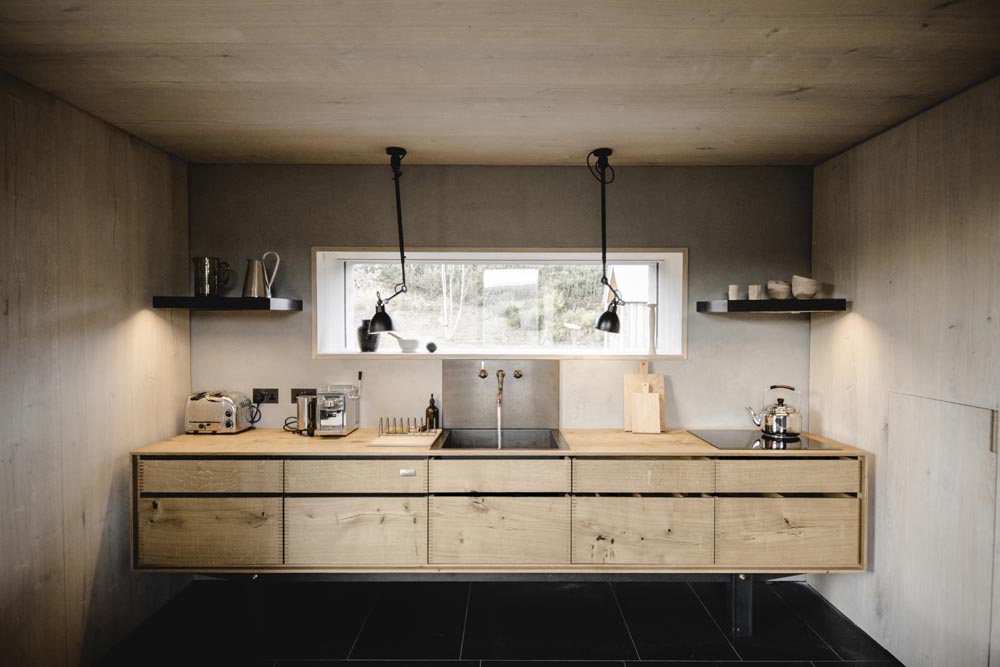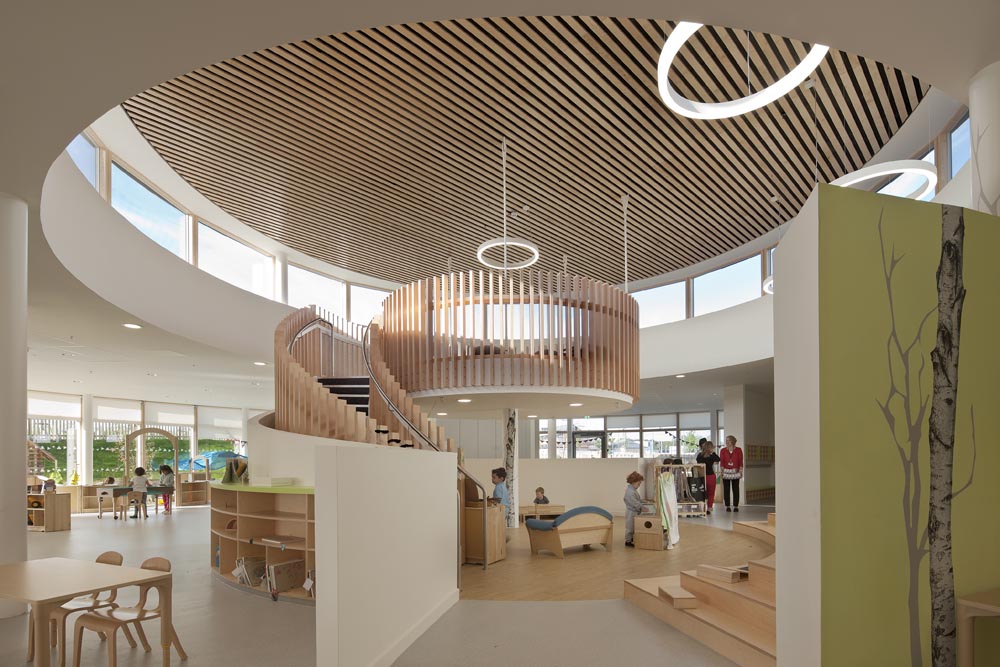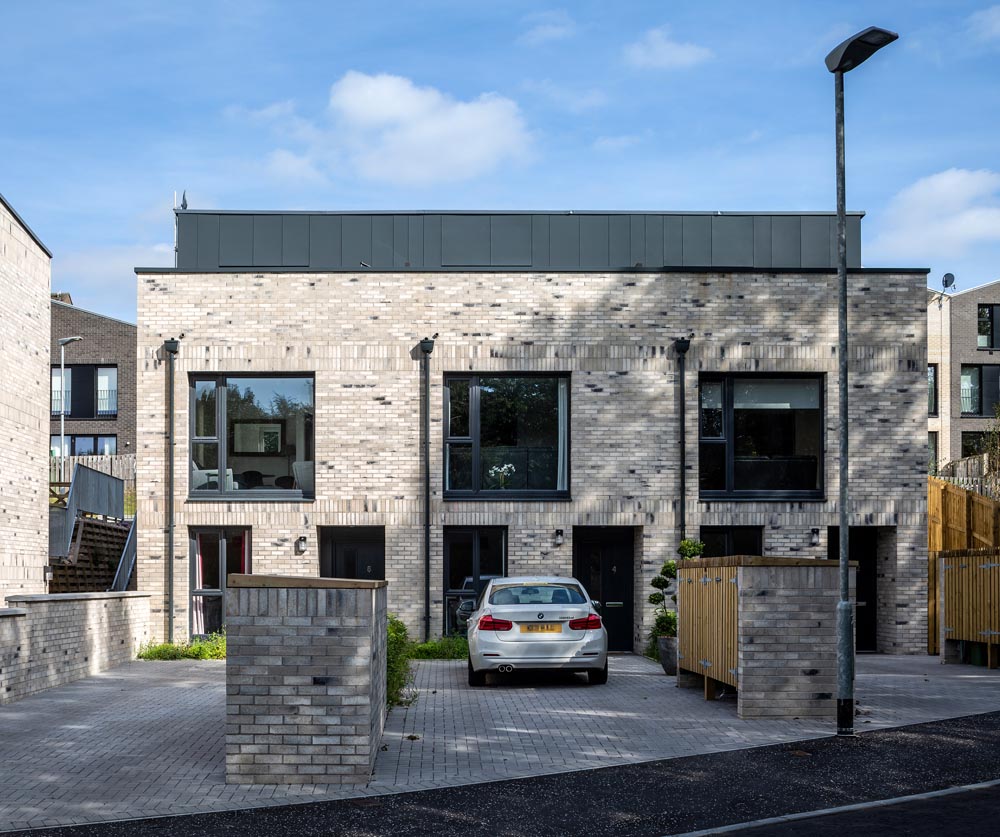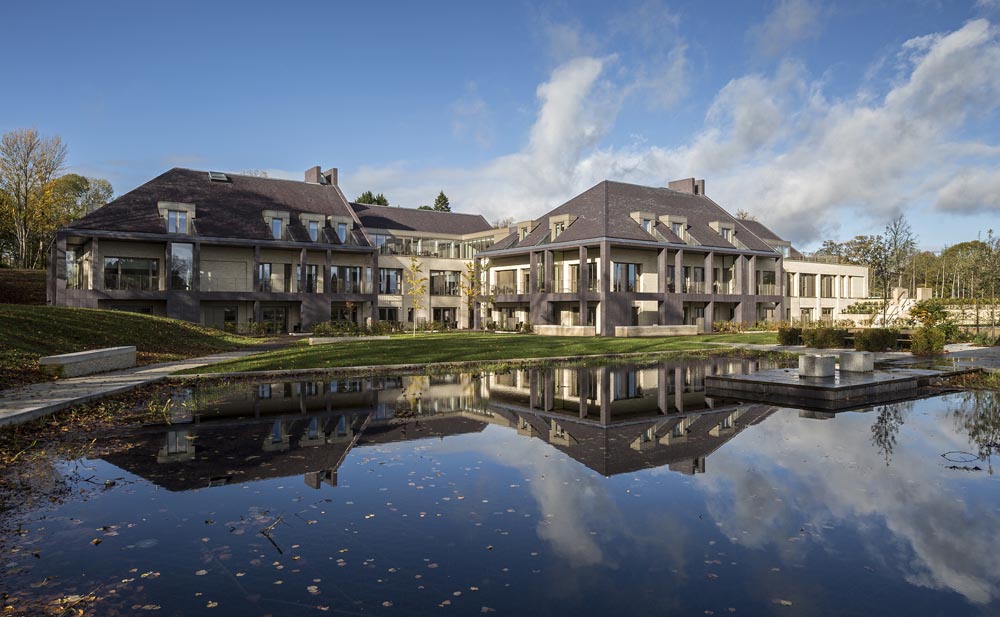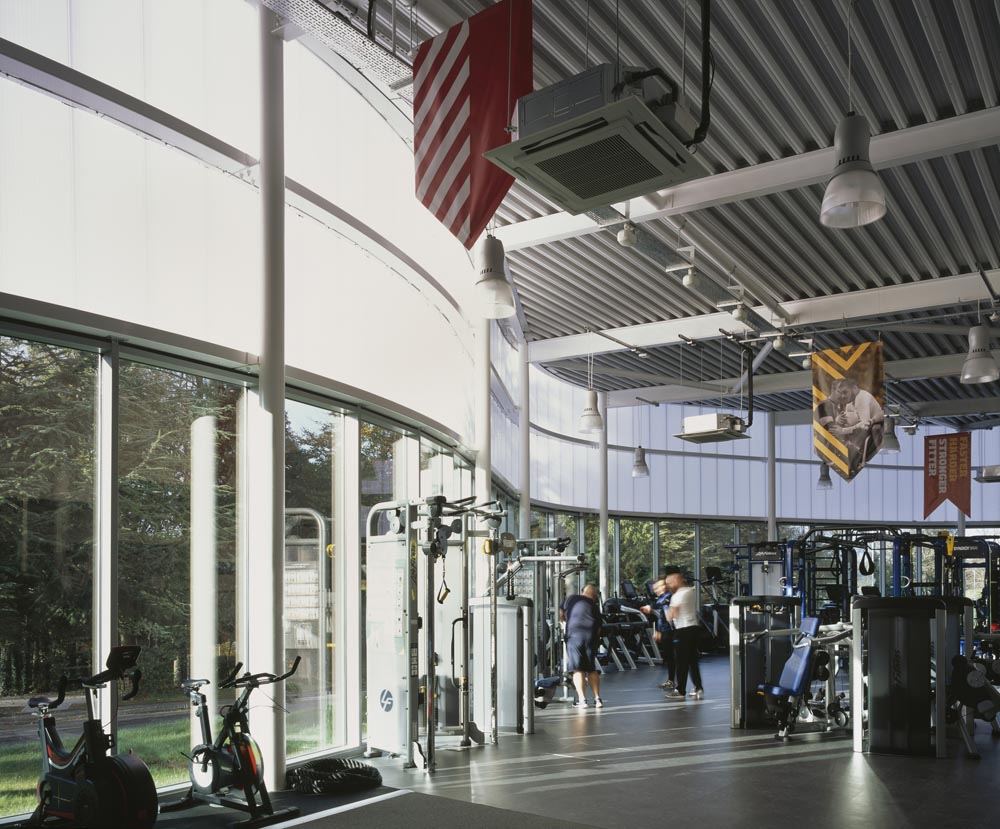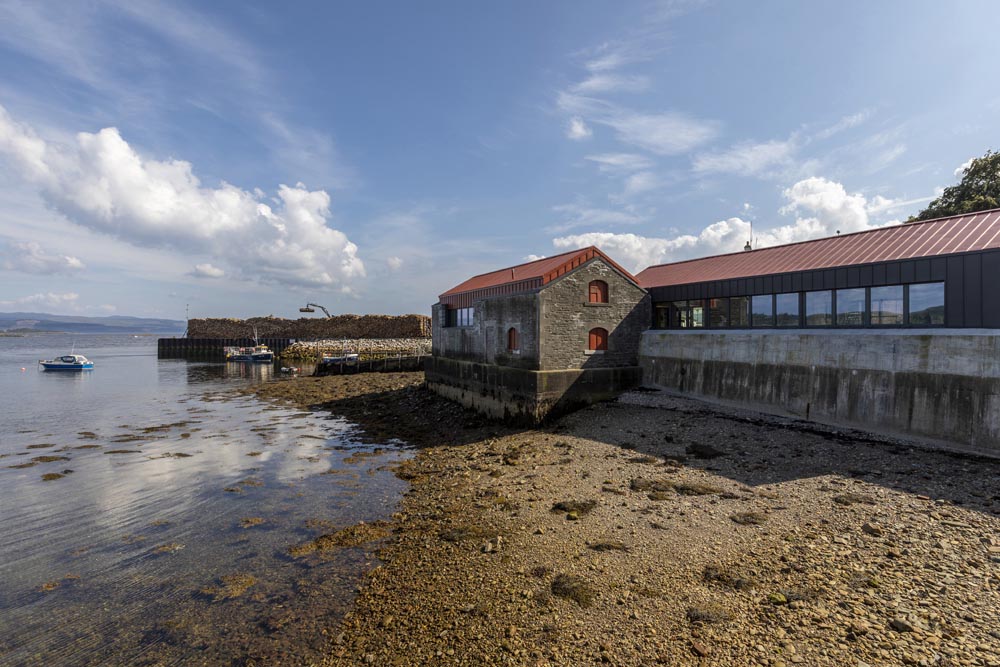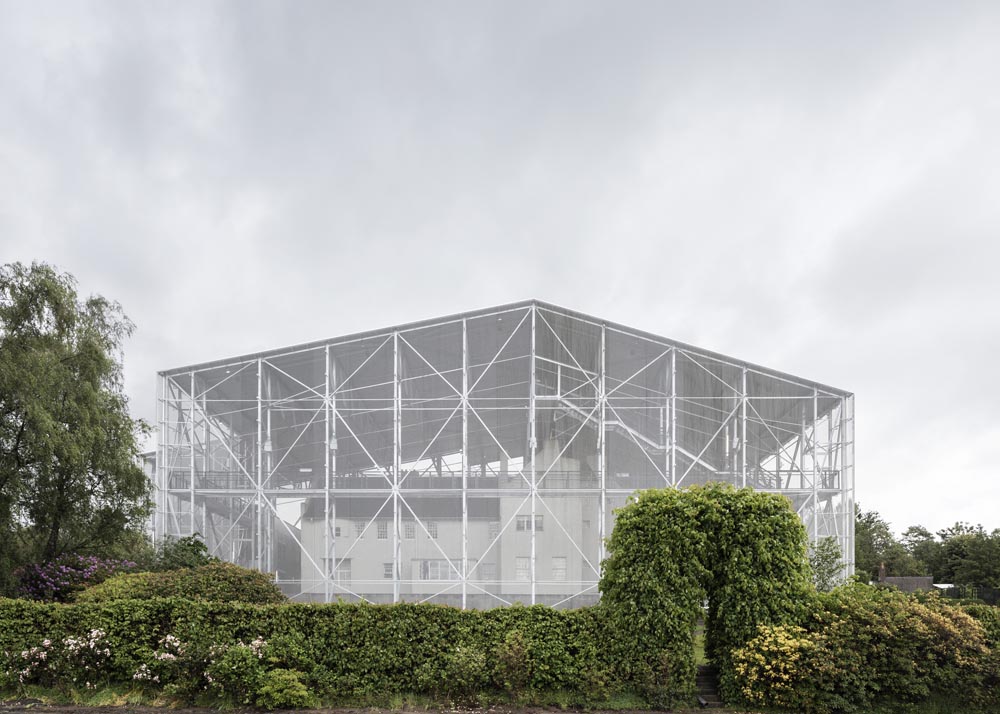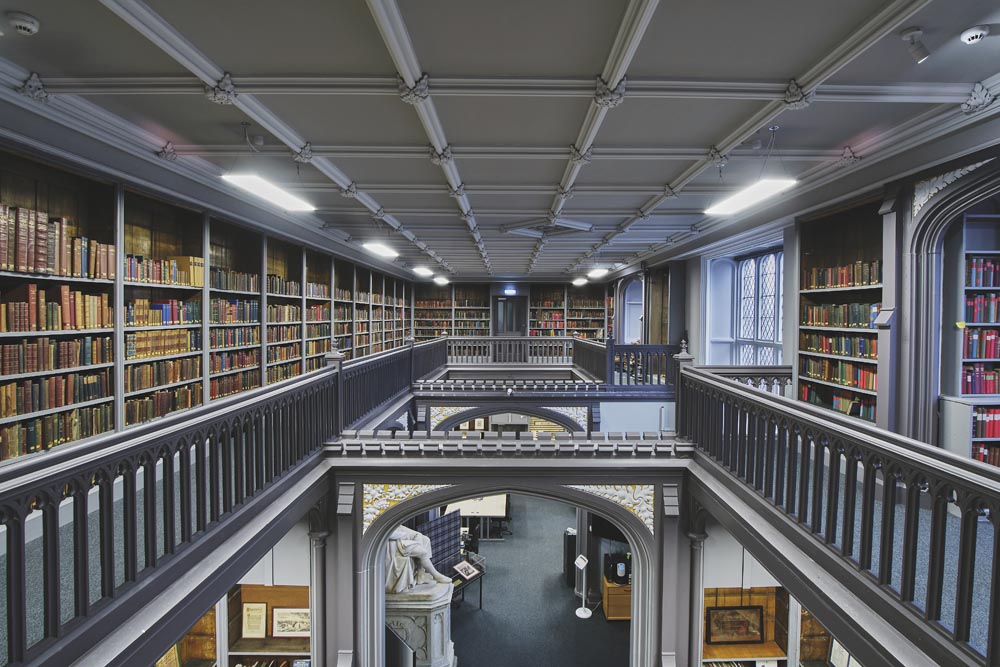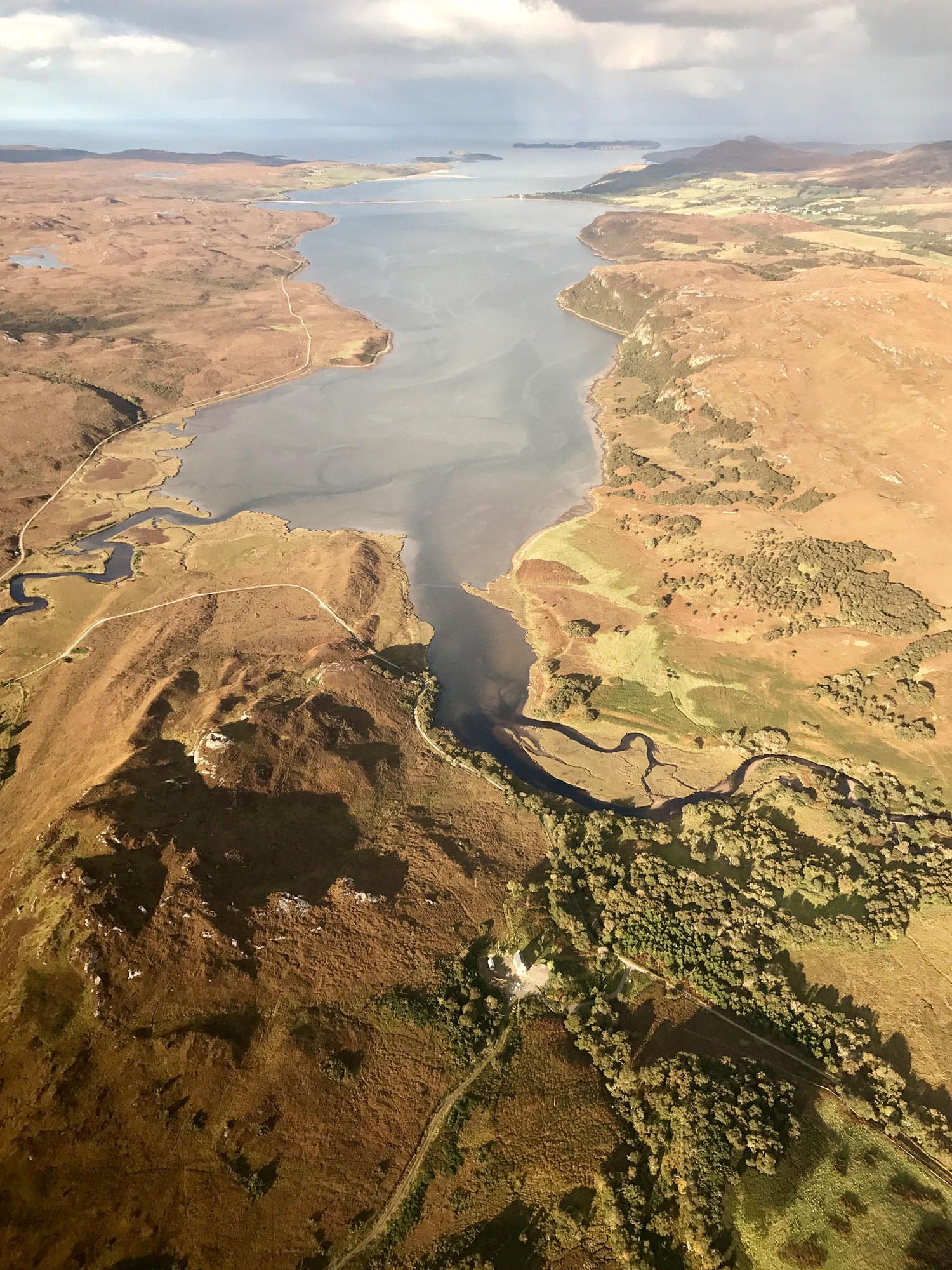
Kyle House
Groves-Raines Architects Studios Ltd.
Located at the southern end of the Kyle of Tongue in Sutherland, Kyle House sits on an elevated site with uninterrupted views along the length of the Kyle, while to the East the view is dominated by Ben Loyal, known as the Queen
of the Highlands.
The unlisted building dates from the early to mid-19th Century, appearing on the first Ordnance Survey map of the area, dating from 1874. It is believed that the house was built using stone taken from the nearby
Dun Mhaigh broch.
Kyle House, together with other farmhouses, hotels and lodges, is part of Wildland, an ambitious 200-year project established by Anne and Anders Holch Povlsen, which aims to protect and restore the landscape of
multiple highland estates through a journey of careful conservation. To date, WildLand has planted over 4 million trees in a once denuded landscape, and allowed the natural regeneration of many more, as part
of a concerted effort to let nature heal itself in the face of a climate emergency.
Kyle House provides a unique opportunity for guests to spend time in these beautiful landscapes, observing and, critically, supporting the slow process of environmental rehabilitation while reconnecting with nature.
When Wildland took on Kyle House, it was little more than a stone shell with an asbestos roof, windowless on three sides and having lain disused for two decades. Recognising the potential of the building and its
site, Anne Holch Povlsen and Swiss based interior designer Ruth Kramer developed a vision to restore the building through a combination of best conservation and design practice. Reflecting the Norse heritage
of Sutherland, this vision would bring together the best of Scottish and Scandinavian ideas, materials, techniques and technologies to create a special and emotive piece of architecture.
The presence of brown long-eared bats, at the time the most Northerly known roost of them in Scotland, delayed site start and was a significant reason for undertaking the work in two phases, the first phase consisted
of restoring the external fabric of the building and finishing the attic roost, thereby ensuring continuity for the bats. In line with Widland’s ambitions to support local opportunities and employment, the decision
was taken to employ the most local contractor capable of doing the work, K Macrae and Son, based in Durness. The construction period ultimately lasted 39 months, due in part to the phasing, the remote location
of the site and the level of detail required to the finished interior, with a very small, but dedicated local workforce.
From the public road, only traditionally sized windows are visible, and the building appears to be in its original form. On closer inspection, the large, frameless gable windows at ground floor level reveal a subtle
but significant contemporary intervention, while the monumentality of the heavy oak front-door marks the transition from the humble exterior to a highly refined, almost monastic interior.
With almost nothing remaining of the original interior, the traditional plan was reinterpreted and rationalised to form a series of equally proportioned living spaces. These spaces are defined by finely detailed
oak inserts placed into the lime plastered shell of the remaining stone structure, defining the areas within and between them.
Space is given in equal measure to sleeping, eating, living and bathing and all constructed from a simple material palette of Caithness stone, heart oak from Dinesen, lime plaster from Viero, metal ironmongery and
glass. Technology is used sparingly and discreetly, and only where it supports easy and efficient living in the house.
The kitchen and living space are located on the ground floor, each with a large, deep-set window lined in oak, allowing light to reach deep into the plan while providing immersive views of the landscape out. The
living room window, which commands views up the Kyle of Tongue, is flanked by an open fire, burning wood sustainably grown on the estate. The ground floor is constructed of polished Caithness stone, connecting
it with the surrounding landscape, and is gently heated to be warm underfoot. The tactile and subtly glossy finish of the stone floor is echoed by details such as the metal window frames, light fixtures and
ironmongery. The kitchen itself is crafted in the same oak used throughout the house, with a narrow ribbon window at eye level above.
The result is an extremely quiet, efficient and peaceful house, built to last for generations and perfect for two people to live slowly and comfortably while immersing themselves in the dramatic, natural setting.
Client
Private Client
QS
Morham & Brotchie
Structural Engineer
David Narro
Associates
M&E Engineer
Atelier Ten
Concept Design
Director
Ruth Kramer
Landscape Designer
Richard Preston
Garden Design Ltd
Main Contractor
K MacRae and Sons
Ltd.
Gross Internal Area
70m²
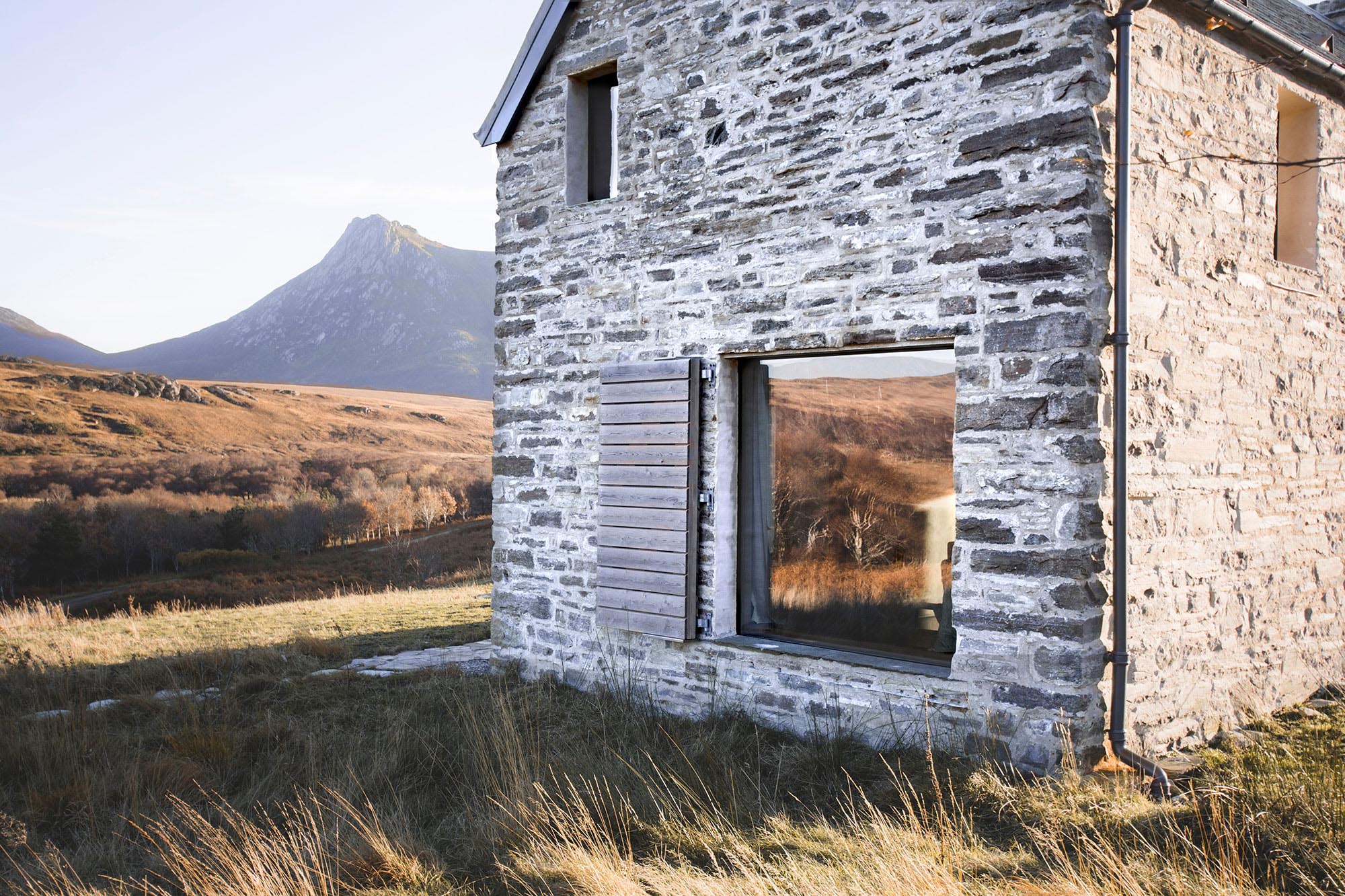
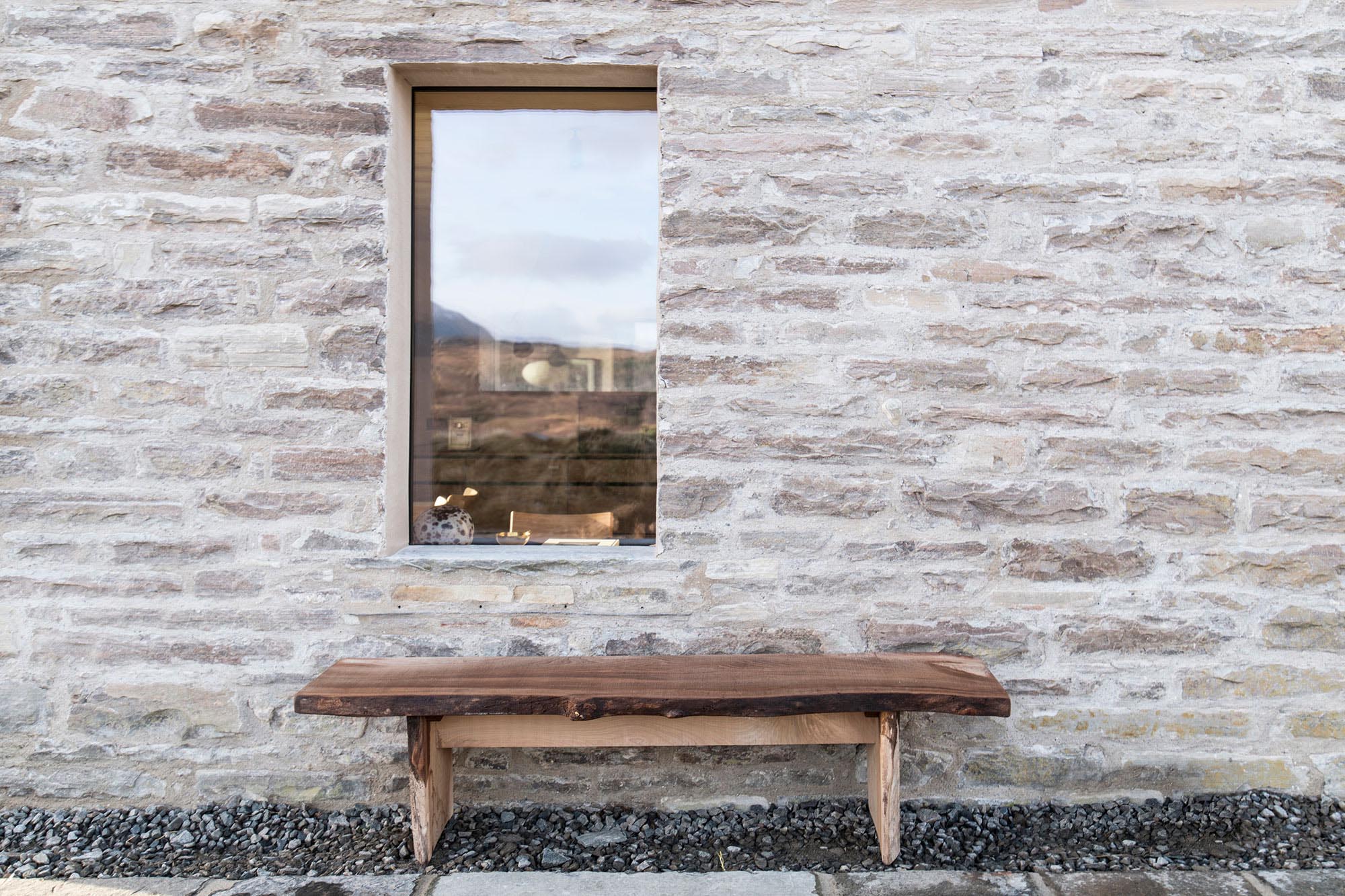
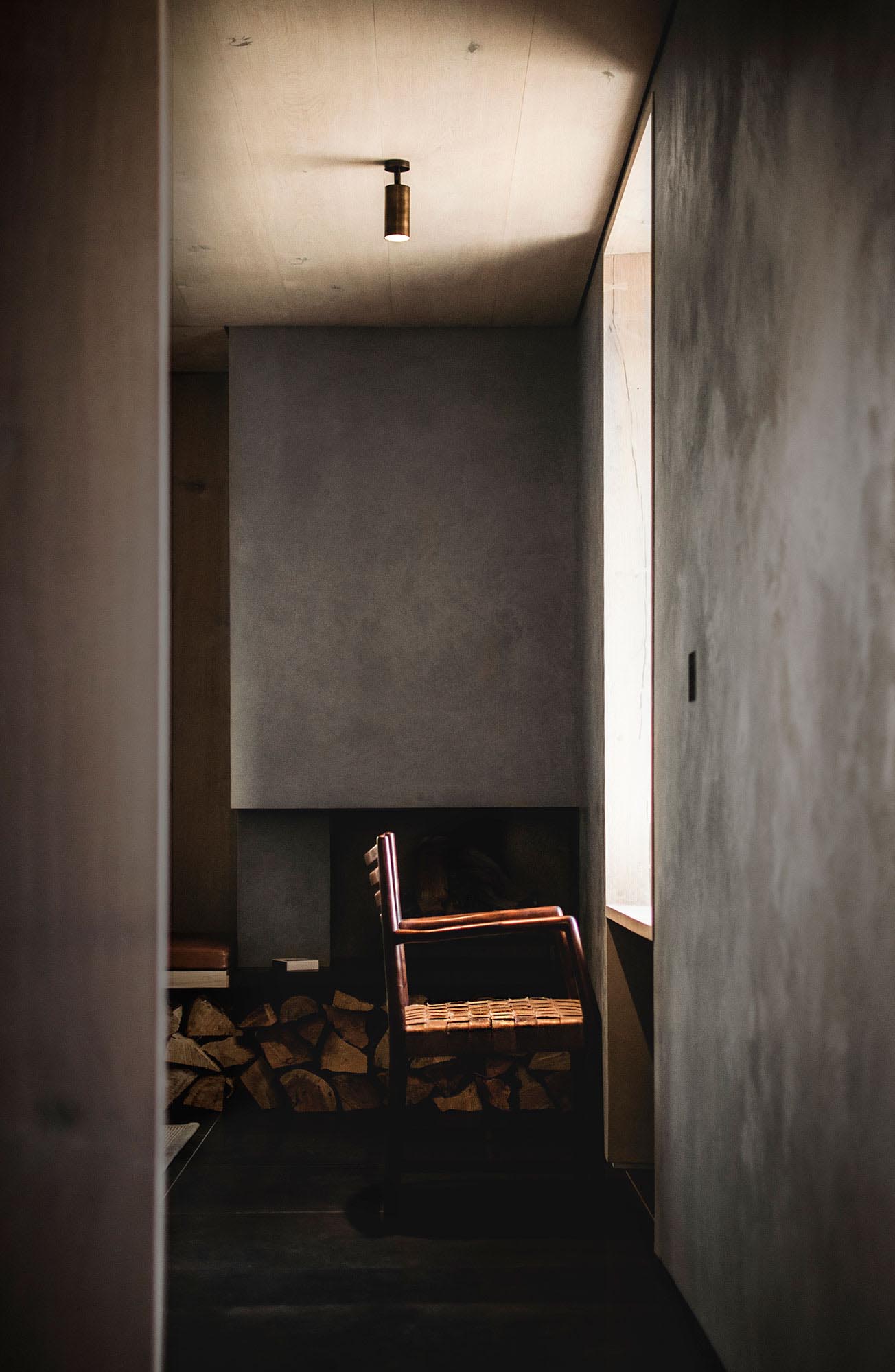
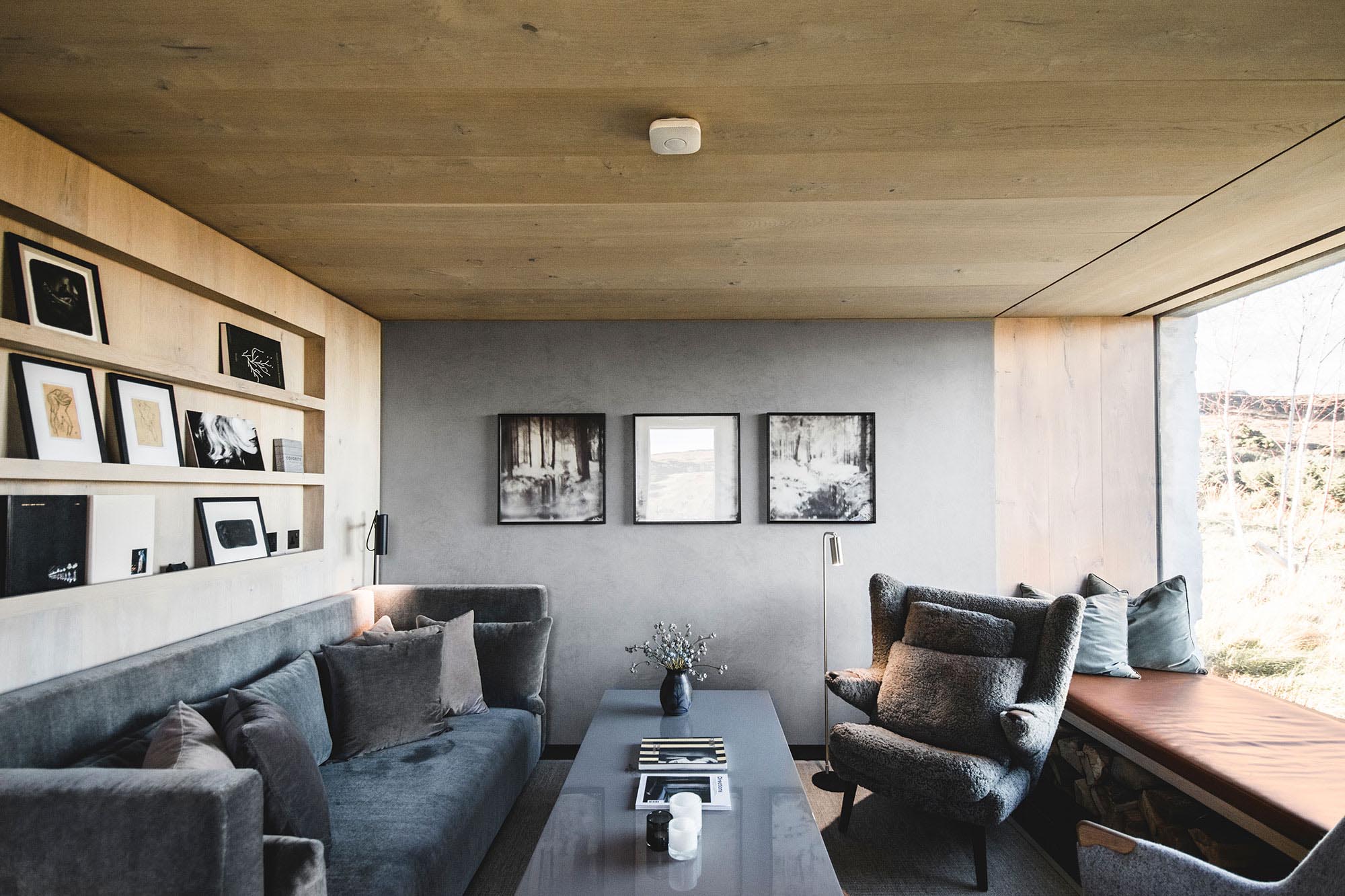
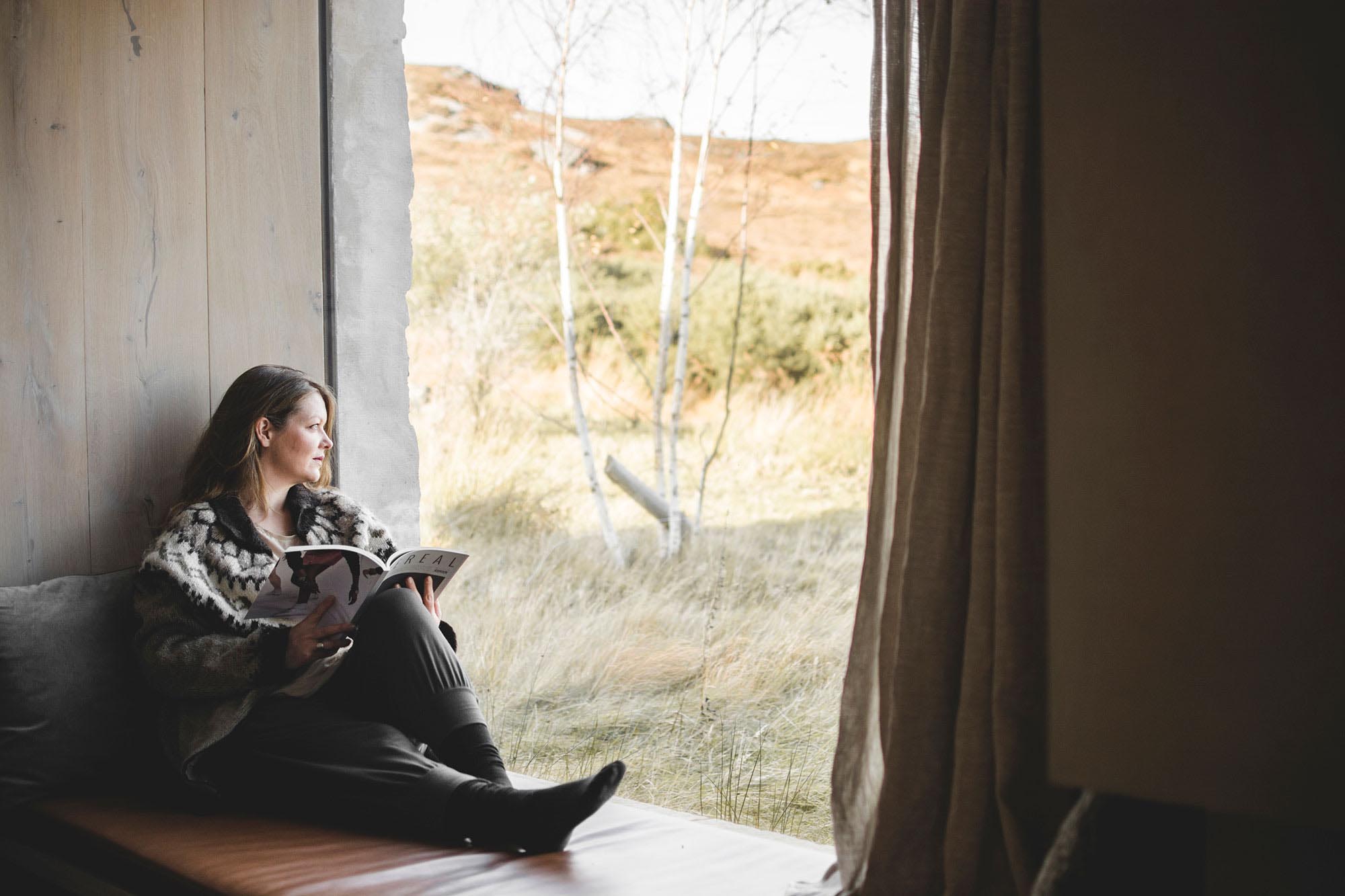
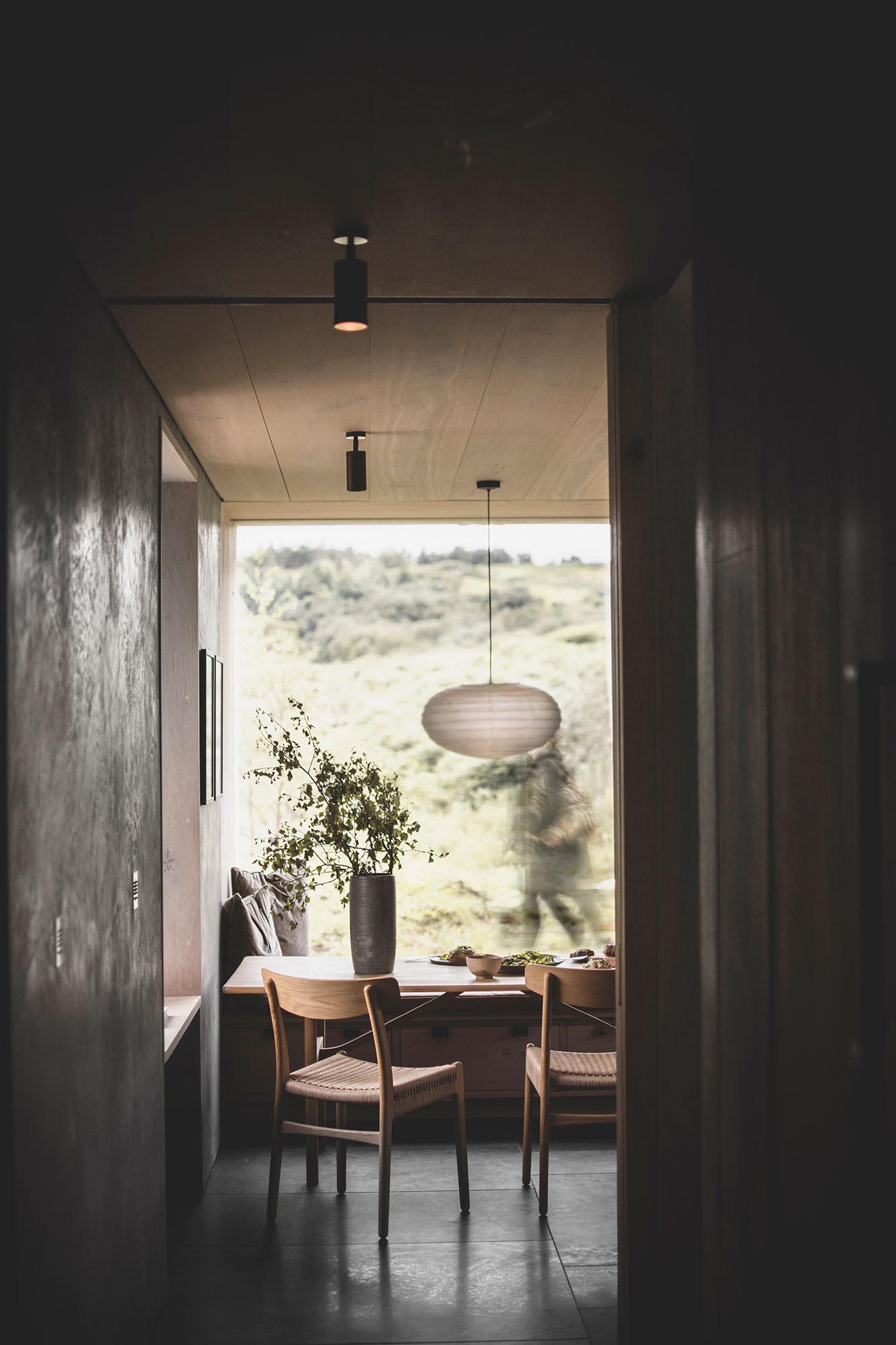
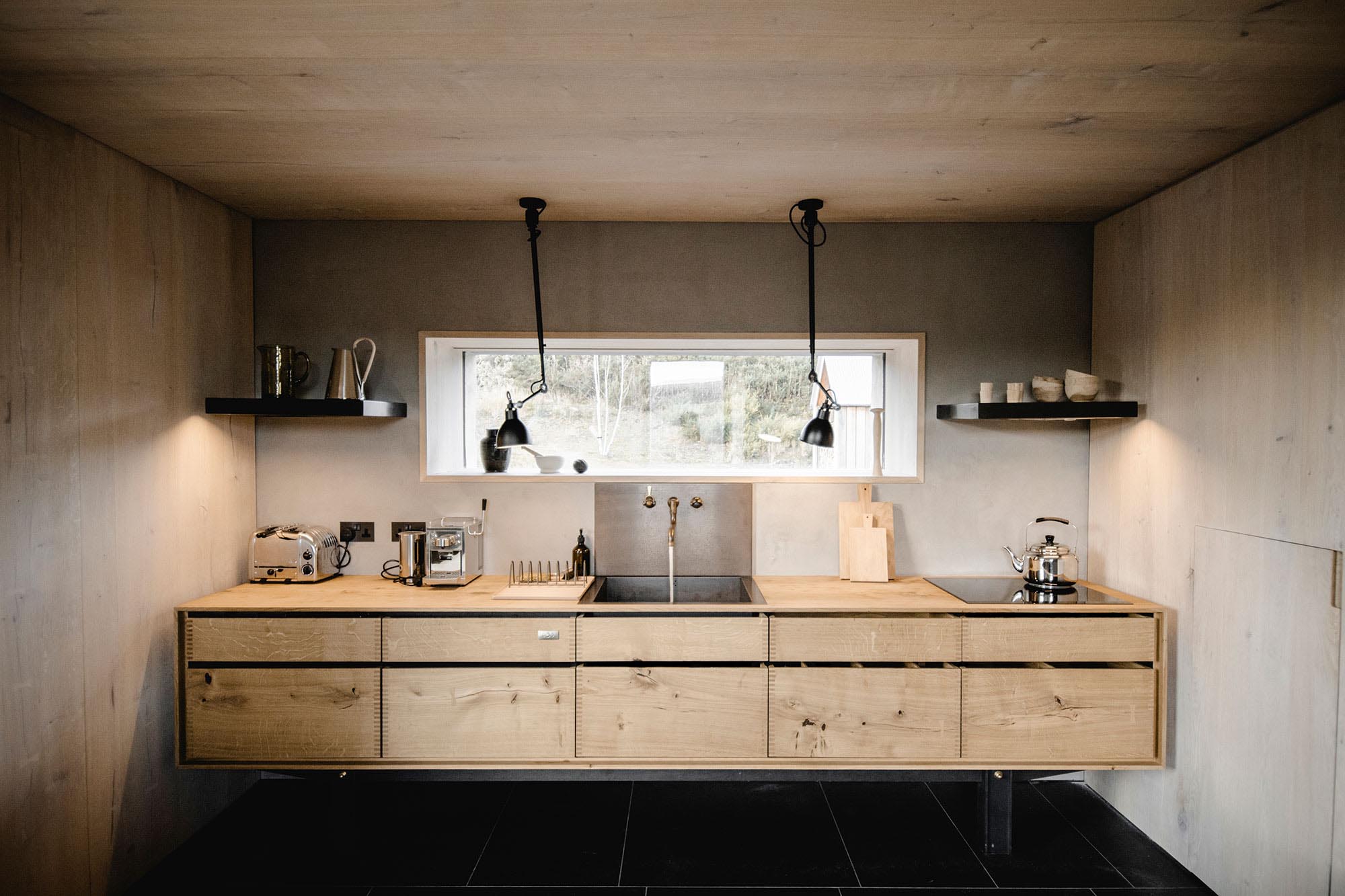
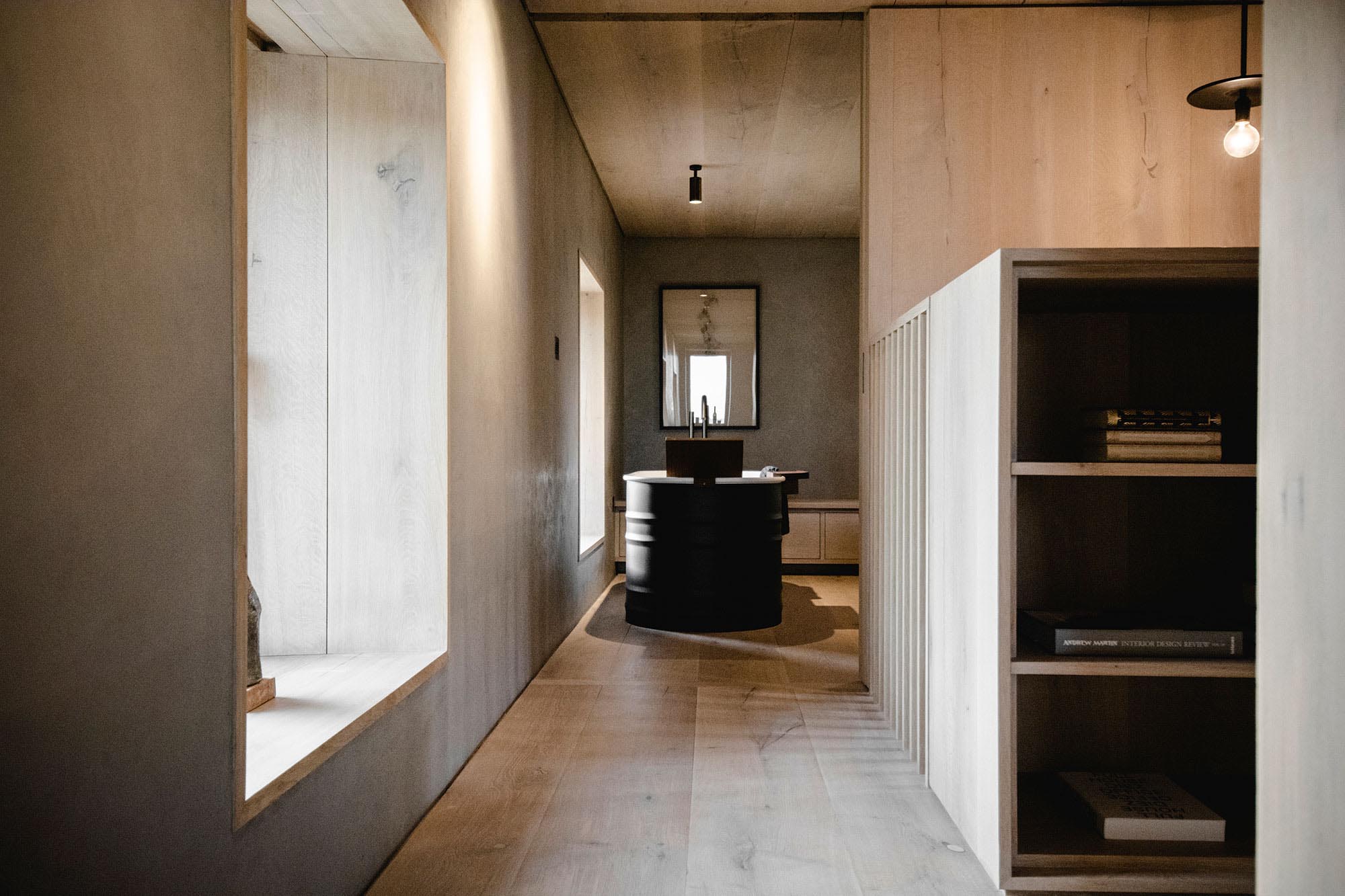
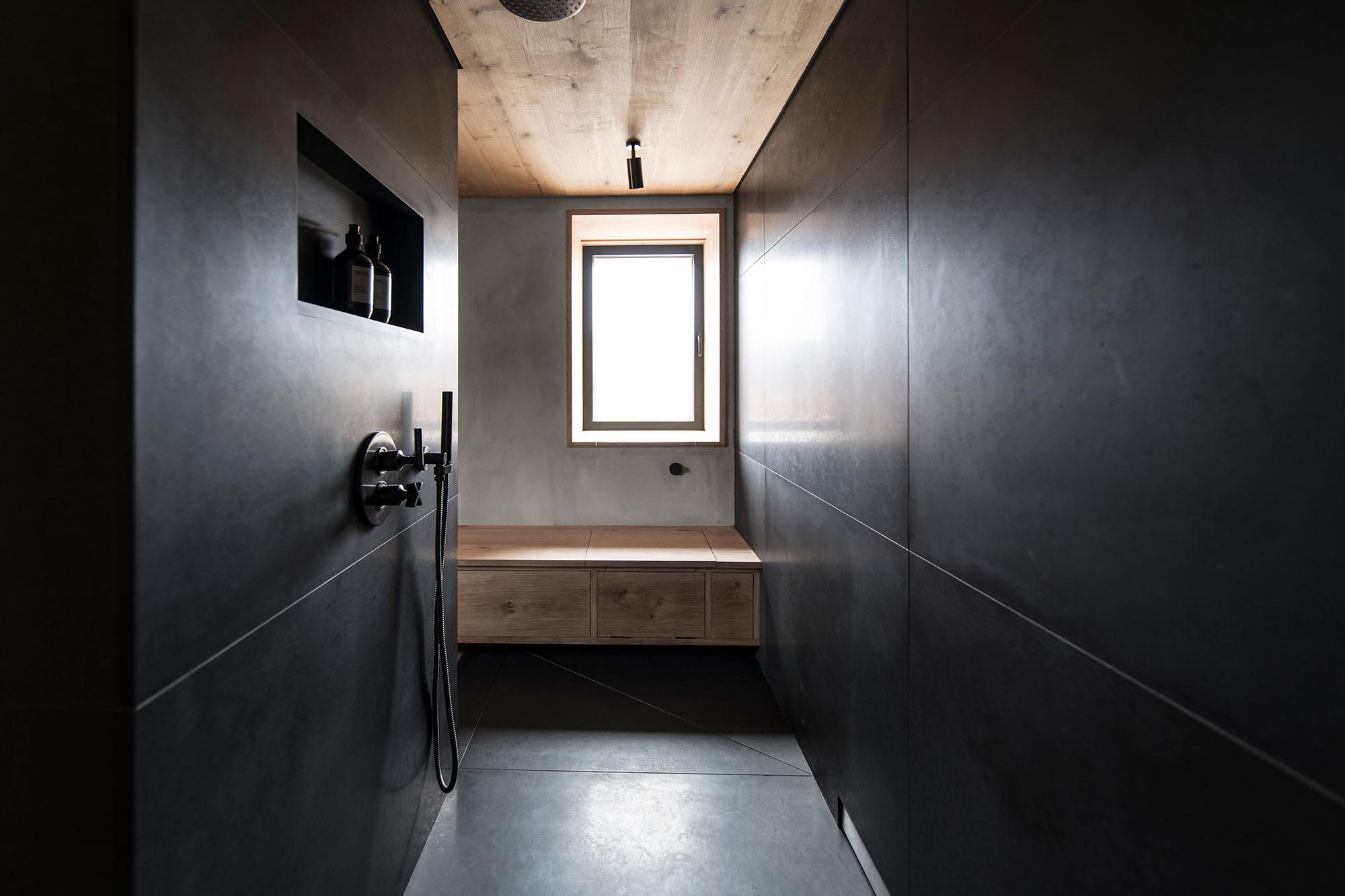
The RIAS 2020 Shortlist









